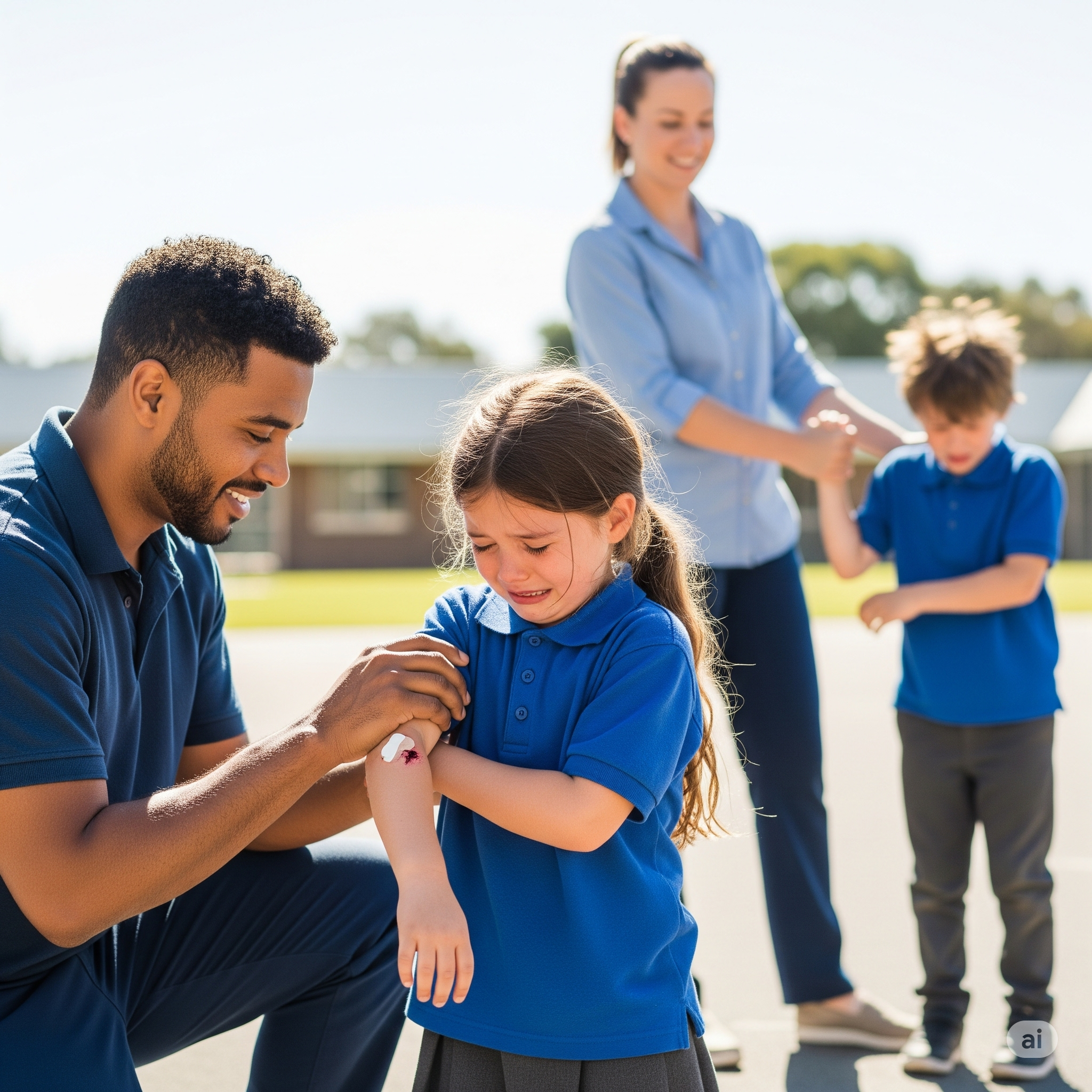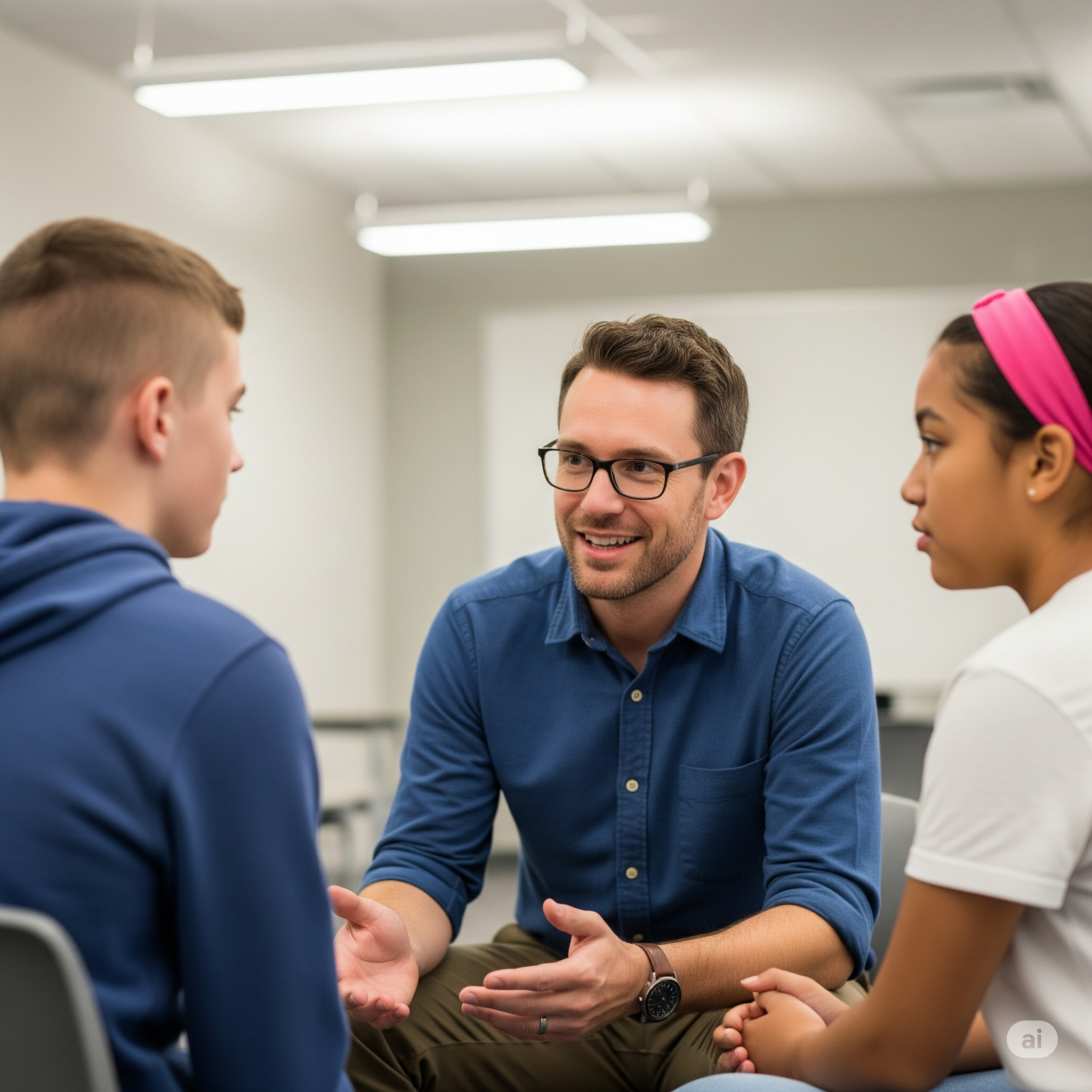Nurturing Connections: The Restorative Playground Solution
When anger erupts and leads to physical harm on the playground, the immediate instinct might be to implement swift, punitive consequences. However, for school leaders committed to restorative practices, such incidents are not just disciplinary challenges, but profound opportunities for healing, genuine accountability, and the development of crucial conflict resolution skills. This approach shifts the focus from simply punishing a behavior to understanding its roots, repairing harm, and strengthening relationships within the school community.
Navigating the Immediate Aftermath: Prioritizing Safety and Initial Conversations
Consider a common scenario: two students, Ava and Mia, are arguing fiercely over a set of swings, a common flashpoint in the bustling environment of a school playground. Frustration boils over, and Ava, perhaps feeling unheard or pushed to her limit, shoves Mia. Mia stumbles, hitting her elbow on the unyielding metal of the swing set, leaving a small cut that begins to bleed. Understandably, Mia is upset and crying, the pain and shock evident.
In these moments, a swift and thoughtful response is critical. First and foremost, separate the students immediately. This isn't about isolating them as punishment, but about ensuring no further harm occurs and allowing emotions to de-escalate. Once separated, attend to Mia's injury with prompt first aid and provide comfort. This physical care demonstrates immediate empathy and concern for the harmed individual. Simultaneously, ensure Ava is in a safe, supervised space where she can begin to calm down.
Once both students have begun to regulate their emotions, engage them in separate, private conversations. The goal here is to gather initial perspectives without judgment, creating a safe space for each child to share their side. With Ava, you might gently ask, "What happened? What were you feeling right before you pushed Mia?" This invites her to reflect on her emotions and the sequence of events. For Mia, questions like, "How are you feeling right now? What do you need?" can help validate her emotions and identify immediate needs, both physical and emotional.
Deepening Understanding: Facilitating Individual Reflection and Empathy
Following the initial de-escalation, conduct separate, more in-depth restorative conversations with Ava and Mia. These discussions are foundational to the restorative process, moving beyond the surface-level facts to explore the deeper impacts.
With Ava, the focus is on guiding her to truly understand the full impact of her actions. This isn't just about reciting rules, but about fostering empathy. Questions like: "When you pushed Mia, she hit her elbow and got hurt. How do you think she feels right now, both physically and emotionally? What kind of ripple effect did your actions have on Mia's ability to play, on the general feeling of safety on the playground, and even on the game you both wanted to play?" These questions encourage critical thinking and help Ava connect her behavior to its tangible and emotional consequences. Guide her to take ownership of her choice and the harm she caused, helping her to dissect the anger that led to the physical act: "What were some other things you could have done when you felt that angry, instead of pushing?" This crucial step moves toward genuine accountability, rather than just compliance, laying the groundwork for future behavioral change. Research by Gonzalez (2012) highlights how facilitating a student's understanding of the impact of their actions is a key factor in reducing reoffending and promoting intrinsic motivation for change.
With Mia, continue to validate her feelings of hurt, anger, or even confusion: "It's totally understandable that you're upset. Beyond the cut, what do you need to feel safe and better right now? What would help you feel like things are more right again?" This ensures that the harmed party feels thoroughly heard, respected, and empowered in identifying what repair looks like for them.
Facilitating Repair: The Restorative Circle or Conference as a Bridge to Resolution
Once both students are calm and have had an opportunity for individual reflection, and crucially, only if Mia feels safe and is willing, bring them together with a trained facilitator. This could be a school counselor, an experienced administrator, or a teacher well-versed in guiding restorative conversations. The purpose of this restorative circle or conference is profoundly powerful: it provides a structured and safe space for Ava to hear directly from Mia about how her actions affected her, and for both students to collaboratively develop a plan for repair. This is where the true transformative power of restorative practices shines, moving beyond blame to focus on solutions, healing, and rebuilding relationships (Hopkins, 2004).
The facilitator's role is not to dictate, but to guide the conversation with specific, open-ended questions designed to foster understanding and generate solutions:
"Ava, what happened from your point of view regarding the argument and the push?"
"Mia, how did Ava's actions affect you, both physically when you hurt your elbow, and emotionally?"
"Ava, hearing what Mia just said about how she was affected, what thoughts come to mind for you now?"
"Mia, considering what happened, what do you need from Ava to feel better, or for things to feel more right between you two?"
"Ava, hearing Mia's needs, what are you willing to do to make things right for Mia and to ensure this doesn't happen again?"
Crafting a Plan for Amends and Future Prevention: Building Skills for Life
The plan to fix things should be something that both students actively agree upon and that directly addresses the harm caused. This ensures genuine buy-in and effectiveness. This might include:
A genuine, heartfelt spoken apology from Ava to Mia, not just "I'm sorry," but an acknowledgment of the specific harm ("I'm sorry I pushed you and that you got hurt on your elbow").
Ava making amends through a tangible act of kindness or assistance, such as helping Mia with a classroom chore for a few days, sharing a preferred activity, or offering to help carry her books.
Ava writing a reflective letter to Mia that not only acknowledges the harm but also expresses her understanding of what happened and a commitment to resolving future conflicts without resorting to physical actions. This written reflection can deepen her understanding and serve as a tangible promise.
If appropriate and agreed upon by both students and the facilitator, Ava could even help apply a fresh bandage to Mia's elbow the next day, a direct and visual act of care that symbolizes her responsibility for the physical harm.
Beyond immediate repair, both students, and especially Ava, could significantly benefit from counseling sessions focused on crucial life skills such as anger management, impulse control, and peaceful conflict resolution strategies (Morrison & Vaandering, 2012). These sessions equip students with tools to navigate strong emotions and disagreements constructively. A clear plan for how they will interact going forward on the playground and in the classroom, perhaps starting with supervised play and gradually returning to normal, unsupervised interactions, is also vital for rebuilding trust and ensuring ongoing safety. This proactive planning reinforces positive behavior.
Engaging Parents: A United Front for Support and Growth
Finally, it is essential to communicate effectively with both sets of parents, explaining not only the incident but, crucially, the restorative process undertaken. For Mia's parents, highlight the immediate support and care provided to their child, and the concrete steps taken to address and repair the harm she experienced. For Ava's parents, explain how the school is actively guiding their child to take responsibility, understand the impact of her actions, and learn from this experience in a growth-oriented way. Share the agreed-upon repair plan and discuss how they can support it at home, reinforcing the lessons learned at school.
In some cases, with the student's and parents' agreement, the student might even lead part of the conversation with their own parents, explaining the incident and the steps they are taking to make amends. This truly reinforces accountability and empowers the student in their learning journey, demonstrating their commitment to owning their actions. This collaborative approach with families is often cited as a key factor in the long-term success and sustainability of restorative practices, building a strong support network around the student (Riestenberg, 2006).
When a physical altercation erupts, a restorative approach shifts the focus beyond merely stopping the behavior and implementing punishment. It delves into understanding the emotions and unmet needs behind the actions, teaches empathy, and builds crucial skills for peaceful solutions. This process prioritizes healing for the person harmed, fosters genuine accountability for the one who caused it, and cultivates a commitment to mending relationships within the school community. It's a powerful way to reinforce the message that every action has an impact, and we are all responsible for making things right and rebuilding trust.
Adam Busch, lead contributor at AWB Education, brings a quarter-century of educational experience to his writing. His background spans diverse roles from classroom teacher and coach to building principal and District Office Director.
Citations:
Gonzalez, T. (2012). Restorative Justice in Schools: A Research Review. National Center for Youth Law.
Hopkins, B. (2004). Just Schools: A Whole School Approach to Restorative Justice. Jessica Kingsley Publishers.
Morrison, B., & Vaandering, D. (2012). From restorative justice to restorative practice: The evolution of a concept. In H. Strang & J. Braithwaite (Eds.), Restorative justice and civil society (pp. 31-48). Cambridge University Press.
Riestenberg, J. (2006). The Use of Restorative Practices to Reduce Disproportionality in Schools. Paper presented at the National Summit on Protecting Children and Advancing their Human Rights, Washington, D.C.


